Ducks, the divers and the dabblers.
The Divers
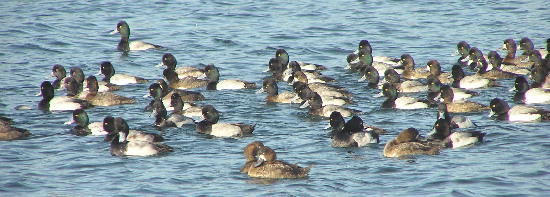
A raft of lesser scaups, one of the diving ducks that utilize the lakes in the summer but head out to the coast when winter arrives. The group of divers includes the scaups, golden eyes, buffleheads, canvasbacks, mergansers and ring-necked ducks.
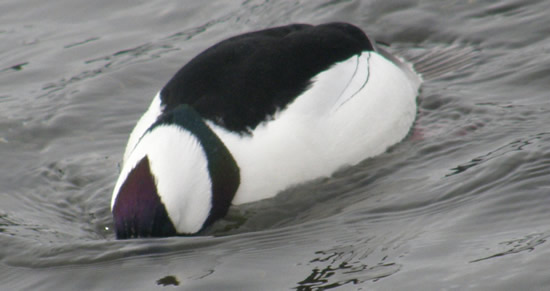 |
|---|
A male bufflehead (Bucephala albeola) looks down in preparation for diving. The bodies of diving ducks are heavier than the dabblers enabling them to submerge quickly.
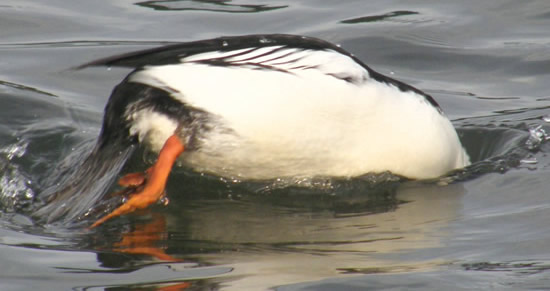 |
|---|
A male Goldeneye (Bucephala clangula ) shows clearly where the legs are placed, well back on the body to propel the duck through the water. Shown here as it prepares to dive.
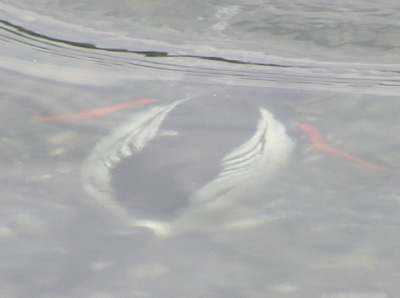 |
|---|
Here we can see how the goldeneye, shown under the water, uses it's legs after diving to swim smoothly through the water. The short wings are used like a rudder for directions.
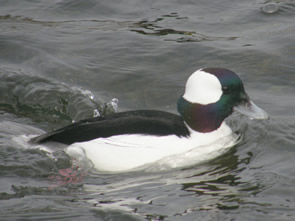 |
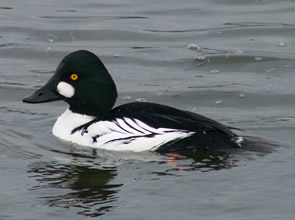 |
|---|
Male Bufflehead and the male Common Goldeneye, Bucephala clangula. Their wings are smaller in proportion to their size and have a much faster wing beat than the dabbling ducks. With smaller wings they are unable to take off vertically and have to run rapidly across the water before taking to the air.
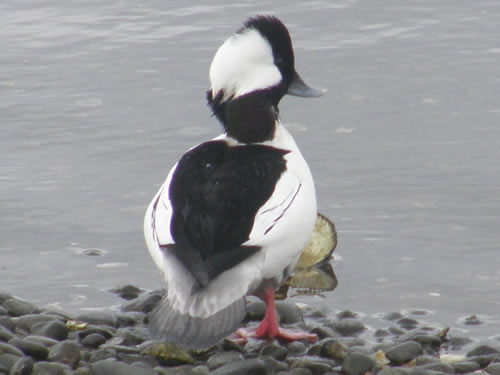 |
|---|
The bufflehead was named because of its short neck and a head that is puffed out to about twice its size. It was originally called buffalo head because of this trait. This image of the male shows a different view of what we usually see.
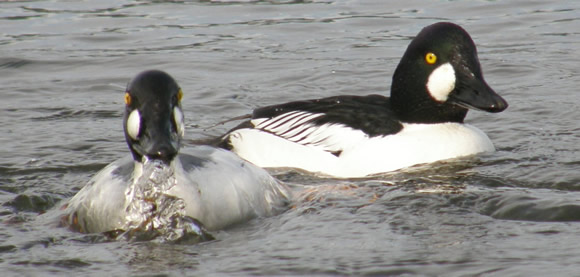 |
|---|
The ducks have special beaks with rows of plates called lamellae. These plates allow the ducks to filter out the water out of the side of their beaks , yet keeping the food in. Here we have two male golden-eye with the one on the left filtering the water after a dive.
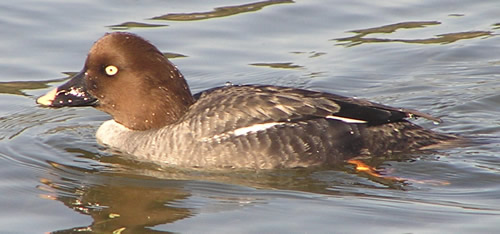 |
|---|
This is the female Goldeneye with the plainer brown colors and of course the eye color which gives these ducks their common name.
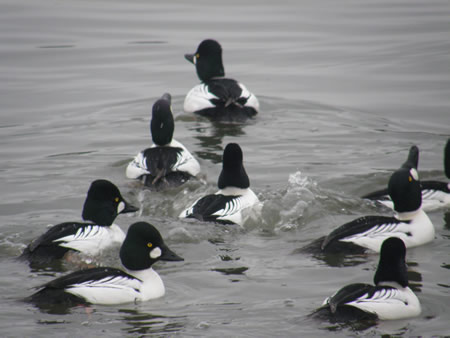 |
|---|
Common Goldeneye enjoy their own company and can gather together in great numbers as many of the duck species does.
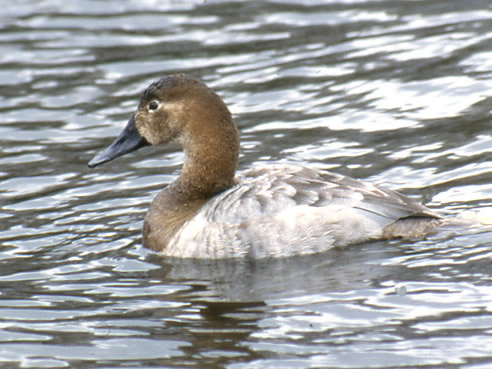 |
|---|
The Canvasback, (Aythya valisineria) is one of the fastest flying ducks. They breed in the prairie wetlands, building their nests in marshes and lining them with down. They migrate and over winter on the coast in saltwater bays.
| The most numerous amongst the diving ducks is the Lesser Scaups, (Aythya affinis). It is an inland bird that only leaves for the coast and warmer climates in bad winters. On these occasions it spends the time at sea. |
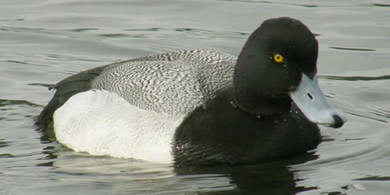 |
|
|---|---|---|
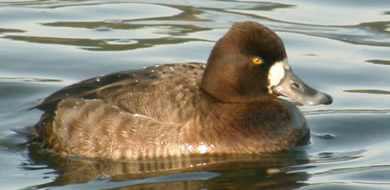 |
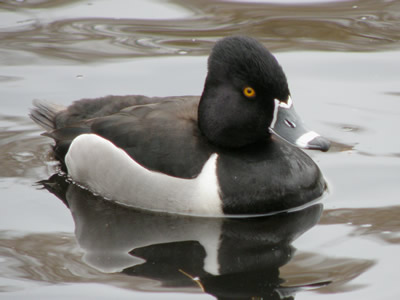 |
|---|
The male ring-necked duck (Aythya collaris ) should be called the ring bill duck because of the very visible ring on both the male and females bill. The actual ring on the neck which has given these ducks its name, is only seen when the bird is in ones hand.
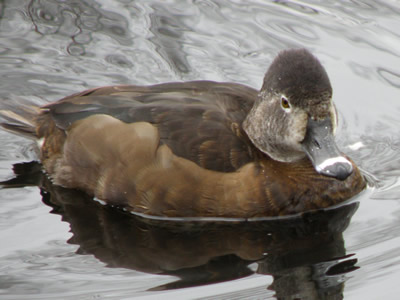 |
|---|
The female ring-necked duck as with the other ducks has the brown plumage but as mentioned, has the ring around the bill.
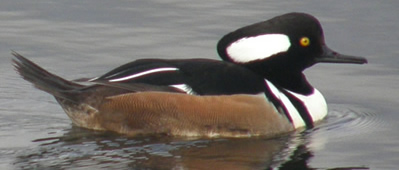 |
The Hooded mergansers (Lophodytes cucullatus) is one of the species that is adapted to catch fish under water. The common mergansers (Mergus merganser) and the Red Mergansers (Mergus serrator ) also have serrated edges to their bills enabling them to grip and hold onto fish. |
|
|---|---|---|
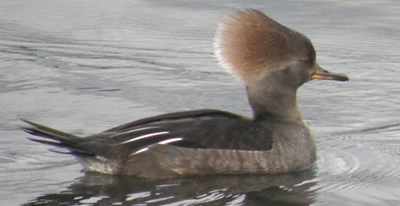 |
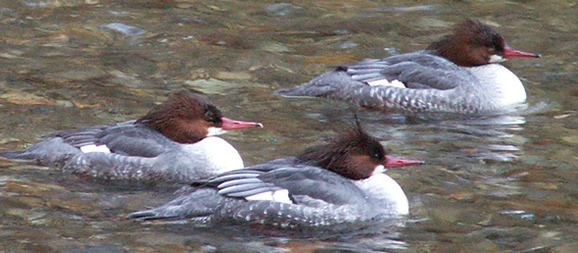 |
|---|
The image above shows three female Common Mergansers (Mergus merganser) These mergansers are well distributed throughout Europe and Asia besides North America.
 |
|---|
The Common Merganser, with two males shown here, are very common on lakes and prefer the rivers to the sea. Their nest are found in tree holes.
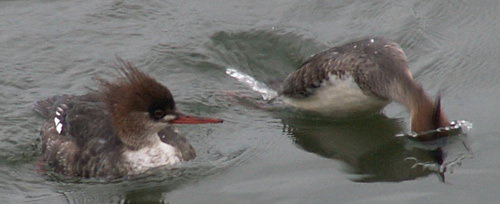 |
|---|
Two Red Mergansers (Mergus serrator ) with the one on the right preparing to dive.
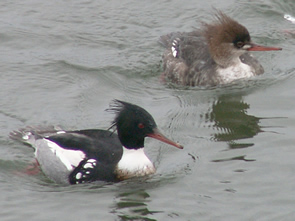 |
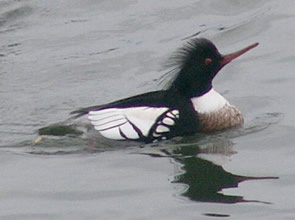 |
|---|
A pair of Red Mergansers on the left and the male on the right. This species of Merganser winters further south than other mergansers in North America and breeds farther north.